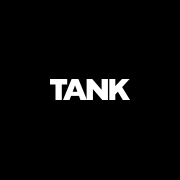A few weeks ago I watched a panel discussion about diversity and inclusion — the panel was made of two males, and two females and all four were of white-Anglo decent. I believe they did their best with this awkward panel setup, yet I wrestled with the question, Why Am I Not Surprised?
See, I believe in ethical work and for a long time I believed that the choice to do ethical work was a simple one.
A Yes or No question.
In or Out.
Black or White.
Good and Bad.
A binary equation between whom we would work with, and those with whom we’d never engage.
Two men, two women — diversity box ticked.
I believed that the choice was a clear-cut choice between good and evil requiring very little thought or discussion. After all, the list was simple, no tobacco, firearms or brothels, and more clients that make us feel like we’re doing good, meaningful work.
In fact, it would be so easy if our decisions to do ethical work, and run our ethical businesses, were this simple.
If all we had to do was to decide between right and wrong — between the good client and the bad one, the solar-panel manufacturer, the affordable housing association or the cigarette company — the choice would be easy every single time.
If all we had to do was to decide between good and bad, the regulation of our daily behaviours and choices would be as simple as flicking a switch. We would wake up and decide that not only would today be a good day, but we would also do good work, be our best selves in service to — you guessed it — a better world.
And if everything that was out of our control fell into place, we’d go to sleep each night knowing we were ethical in our practice of leadership, and if we needed to, we’d flick the same switch tomorrow and do it all over again.
Some organisations boil their purposeful endeavours for ethical work down to a list of ‘for whom would you work for’ where the answers are mostly ‘Maybe’, sometimes ‘No’ and ultimately a ‘Yes’ to non-profits and anything to do with climate change, education, gender equality and anything else that sits within the United Nation’s Sustainable Development Goals (UNSDGs).
Although a wonderful foundation for ethical decision-making, and organisational development, it is nothing but a romantic notion that keeps our moral compass pointing in a direction that isn’t too disruptive or offensive.
A safe direction, rather than a brave one.
A direction that sees us avoiding having to grapple with the messy nuances that true ethical decision-making requires of us.
Many bad-behaving CEOs have hidden behind this kind of positioning, and we don’t have to look too far into each of our experiences to recall the time we were treated badly by someone in a leadership position.
The mistaken assumption we make is that ethical organisations doing good work, are filled with good people.
Needless to say, we are at the mercy of a system where success is more often than not deemed by profit instead of societal impact; and this profit-as-driver assumption is another one of our mistakes, closing us off to considering new systems, new ways of working, designing and solving problems; and ultimately inhibiting creativity to design and create better systems.
By boiling our ethical decision-making down to a simple binary, black-and-white question, we uphold a blinkered view of the world.
One that stops us seeing our ethical blind spots. Those grey and messy areas that have us feeling like we're stuck in quicksand, deer in headlights, questioning ourselves. Ethical decisions after all, are lines in the sand — and sand has a way of not staying still when the wind is blowing.
The decision to ration scarce resources to those in need.
To donate when you know you really can't afford to.
To go back to the office, or work from home.
To scream for the freedom of the oppressed, when those in power scream otherwise.
To wrestle between whistleblowing and leaking information.
To wrestle with disruption.
It is this idea that helped me realise that you and I, our employees, our communities, and our cultures exist in a vast ethical tapestry. One that is charged with an expectation that sits quietly in our lap, requiring of us something we all have.
Creativity.
The ability to navigate through a fog of ethical grey areas, to sit in ambiguity and discomfort so we might better represent our communities, redesign our organisations and ultimately show up as kind, compassionate, ethical leaders, each and every day.
And to do this we must be able to listen and see this ethical tapestry for what it is.
A range of cultures, ideas, experiences, and aspirations.
We must be able to understand intimately, the guardrails that hold our organisations, communities and societies together — laws, expectations, policies, cultural queues, lessons learned and priorities.
Shifting sands in which we try to draw our lines.
And this understanding will help us create our own ethical framework for our decisions, helping us realise that we may in fact have to wrestle between two or three positive outcomes, instead of good and evil.
That today we will have to make the call that we may not save the world; that we may not reduce global warming, provide sovereignty to those who seek it or house every single person in need of somewhere safe to call home.
But rather, we have to wrestle with ideas when we feel they are just, whilst others don't; and we must also wrestle with our own idea of how we see the world.
Always questioning our own ethical lens.
Today, my friend Marita put it to me in a way that I could not and with her permission I use her words here intermingled with my own to finalise this weekly thought about ethical work.
Ethical work strengthens our resolve to challenge systems and look at them with a discerning and critical eye.
To not be bystanders.
To not only question the way our society works, but also to look within and ask ourselves what role we play within the structures we seek to change.
Ethical work has us asking 'How might I challenge this mess in front of me, and how might I do it with kindness and compassion?'
_
This essay was first published to subscribers of The Weekly Journal of Creative Leadership.


